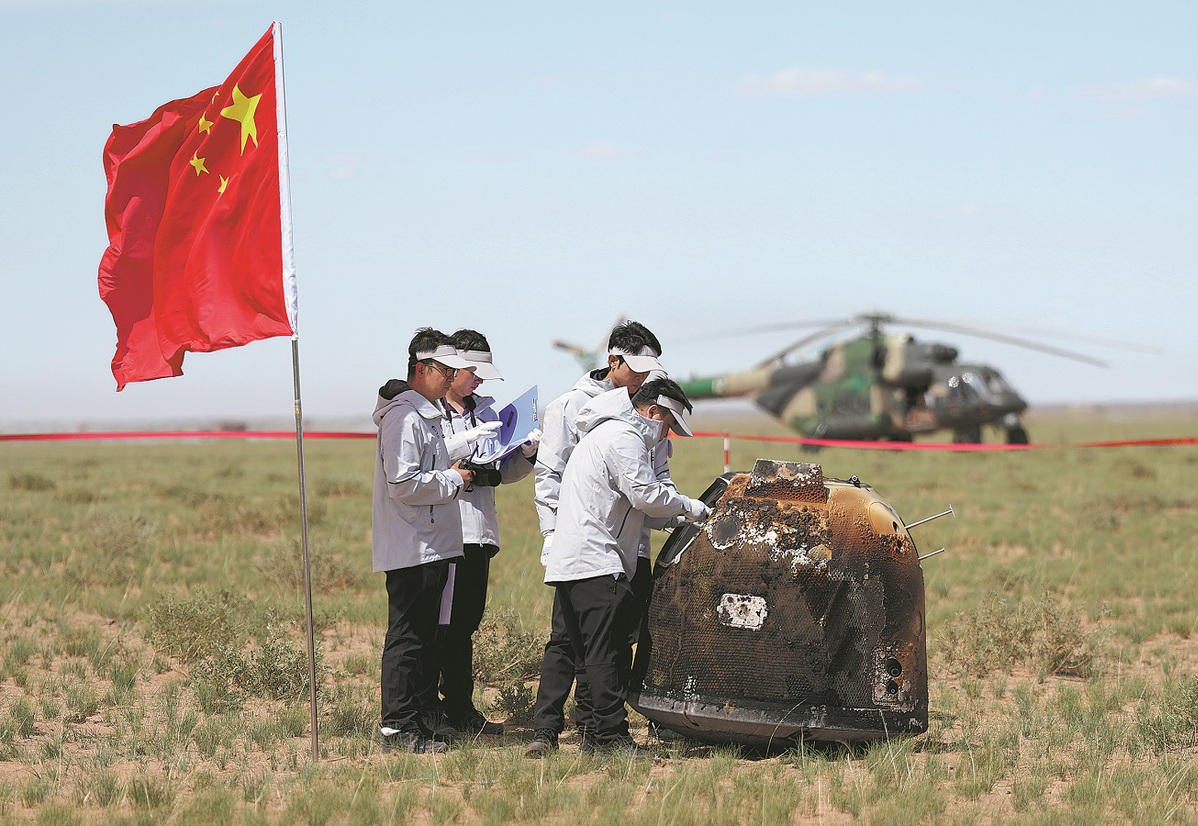
China Daily » Capital News
BEIJING, China, Jun 26 — The Chang’e 6 mission is unique in being mankind’s first mission to bring back samples from the far side of the moon. The success of the mission and its outcomes will doubtlessly contribute to a more comprehensive understanding of lunar evolution.
Because the period of the moon’s rotation is the same as that of its round trip around the Earth, more or less the same side of the moon faces the Earth all the time, which is called a tidal lock. Although US astronauts landed on the moon in the 1960s, it was not until 2018 that China’s Chang’e 4, although unmanned, soft-landed on the far side of the moon. Later, in 2020, Chang’e 5 brought back lunar soil from the near side of the moon. Now, Chang’e 6 has surpassed those two earlier missions by bringing soil from the far side of the moon.
While the area where Chang’e 5 landed, namely Mons Rümker, was formed 2 billion years ago, the samples collected by Chang’e 6 come from the South Pole-Aitken basin that’s the largest, deepest, as well as the oldest crater basin not only on the moon but in the entire solar system. According to existing knowledge, collisions might have led to the creation of this crater on the moon’s surface, which means the lunar soil collected by Chang’e 6 could be 4 billion years old and reveal secrets of the solar system during that early period.
That’s around the time when the Earth had just come into being. In other words, soil samples from the far side of the moon may tell stories about not only the moon but also the Earth and the entire solar system.
That China is the first country to have sent a mission to collect samples from the far side of the moon shows its technological capabilities. More questions about the moon will surely be answered as China has more missions planned.
For more visit China Daily
For subscriptions on news from China Daily, or inquiries, please contact China Daily Africa Ltd on +254 733 566 499 or write to enquiries@chinadailyafrica.com
